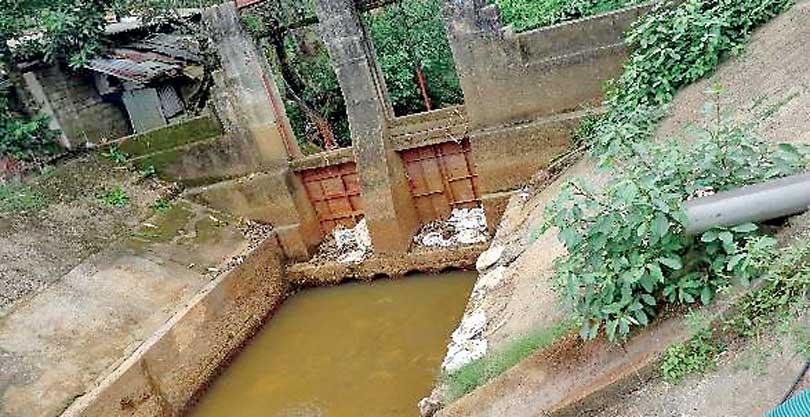04 Feb 2020 - {{hitsCtrl.values.hits}}
Audit Report traces many polluting activities going on unchecked

By Muditha Dayananda
The water of the Kelani River is becoming increasingly polluted due to the non-implementation of regulations by the authorities and non-regulation of human activities harmful to the environment, an audit carried out by the Environmental Audit Unit of the Auditor General’s Department has revealed.
The Kelani River which is one of the four main rivers in Sri Lanka is also the second-longest river and the fourth largest water basin in Sri Lanka. The Kelani River flows across 34 Divisional Secretariats in seven districts belonging to the three provinces, Central, Sabaragamuwa and Western. It also serves as the main water source which provides drinking water to 80% of the population of the Western province.
A total of 10,511 factories have been set up surrounding the Kelani River basin. The Seethawaka and Biyagama Export Processing Zones are also situated close to the Kelani River basin. According to the audit report, the Kelani river has been gravely polluted due to wastewater and solid waste surreptitiously being released into waterways from these Export Processing Zones and other factories.
The report says that the Environmental Protection Licence obtained by the Seethawaka Export Processing Zone has not been renewed in eight years.
The capacity of the Common Waste Water Treatment Plant which has to cater to 37 industries in the zones is totally insufficient. The apparatus which destroys microbes has stopped working. There is also no proper methodology for the removal of accumulated sludge which is a by product of wastewater purification from two Export Processing Zones. There is also the risk of sludge re entering water sources due to it dissolving in rainwater.

There is also a great risk of erosion of river banks due to the rampant proliferation of unauthorized constructions on the banks of the river . It has also been revealed that many hotels, houses and other factories situated surrounding the river release wastewater and solid waste into the river.
Even though it is mandatory for industries on the river bank or nearby to obtain an environmental licenses from the Central Environmental Authority (CEA), 41 industries with high environmental risks belonging to Grade A and B are operating without licenses while 205 industries are operative despite their licenses being suspended. Moreover, 17 industries with very high environmental risks which are operated without any record at all have also been identified.
In terms of paragraph 2.5 of the Circular No. 8/2014 dated December 01, 2014, of the Department of Irrigation, in places where the width of the river exceeds 15 metres, construction is to be done after allocating 198 feet from the river bank.
However, the audit report says that there is a countless number of permanent and temporary constructions on river banks.
Out of 1,524 A Grade factories, only 884 have obtained licenses and out of 1,417 B Grade factories only 726 have obtained licenses.
It has been more than 20 years since the Common Waste Water Treatment Plant has been established and its initial capacity is 9,950 m3 . By the date the audit was carried out, the capacity should have been reduced than the initial capacity. However, the capacity has been today expanded ranging from 14,176 m3 to 28,102 m3.
Waster water which has not been properly purified is likely to be released to the environment, the report says.

Even though a sum of 2.9 million Rupees had been allocated for the removal of innocuous waste, it has not been used until the audit date.
The report shows that dumping of waste from Biyagama Export Processing Zone is also irregular and harmful to the environment. In two water samples obtained from two places where rainwater is emitted, the Coliform level and the E. Coli level have increased from the usual capacity of 4,000 to 546,000.
The capacity in the treated water pond has increased to 106,000. Residents of the area are at risk of becoming infected.
Wastewater is added to the river through Pattiwila Canal close to Pattiwila Water Treatment Plant. Due to the increased pollution in the Kelani river, the total expenditure for water treatment procedure has increased from 879 million Rupees to 929 million Rupees from 2015-2017 due to the increase in expenditure for chemicals.
24 Dec 2024 2 hours ago
24 Dec 2024 4 hours ago
24 Dec 2024 6 hours ago
24 Dec 2024 6 hours ago
24 Dec 2024 8 hours ago